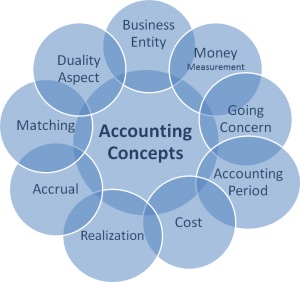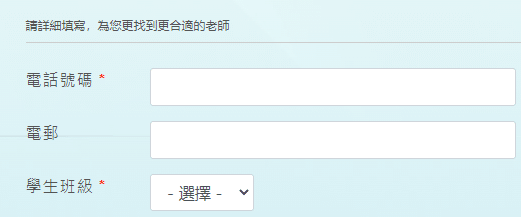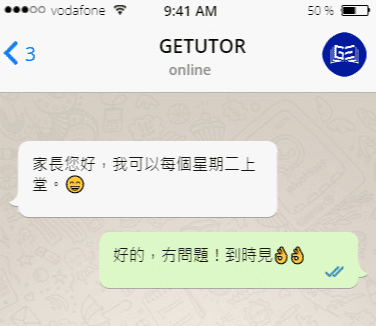DSE BAFS Tips
To help you ace your BAFS DSE and exams, GETUTOR turned to star tutor – Sir Lim – for some advice and strategies.
Paper 1 tests candidates' knowledge of compulsory parts of the BAFS course. There are two main parts of the BAFS exam:
- Part A: Multiple choice questions .
- Part B: Short answer questions – Broken down into Parts 1 and 2, students are required to complete compulsory questions and answer one of two given questions.
Most short questions are usually situational questions and students will often lose points for not answering the question in detail and clearly. Especially when they deal with "Introduction to management"and"personal financeThis is especially common when dealing with module-related issues.
For example: students were asked to explain the consequences of HSBC stopping paying dividends. It is not enough that "the stock price will fall". To receive full credit, they must demonstrate their entire process of deductive reasoning. In other words, they should start by pointing out that such behavior would make HSBC shares less attractive to its shareholders, causing some of them to sell their shares. The addition of suppliers will cause its stock price to fall. And, he reminded students to tailor their explanations to the given scenario.
“Be precise and specific when writing and avoid using generic words in your answers.”
Take the advantages of division of labor adopted by clothing manufacturing companies as an example. Rather than separation and specialization of work tasks “impacting” productivity, students should make it clear that it “increases” productivity. At the same time, it is crucial to choose your words carefully. "Don't forget the terminology and theory you learned. They're what separate you from candidates who didn't review."
DSE has become easier in recent years than in 2019. How to effectively deal with BAFS examination papers?
SIR Lin's advice is to read through all the questions in the exam paper before attempting to answer them.
"There is no need to answer the 'required' questions in order," he said. "Start with the ones you are most confident in answering. Then, work on more challenging questions. This will make your exam go more smoothly."
Some candidates answer both questions in Section B Part 2, even though only the higher-scoring answer counts towards the final grade.
When dealing with MC questions, most students are only concerned with getting the correct answer and use exclusion for questions they don't know the answer to. While this saves time, he encourages using the time spent on past papers to consider why other options are incorrect.
How to manage exam pressure and time allocation issues?
Many times, the Hong Kong Examinations and Assessment Authority will modify the questions from previous years' examinations and reuse them. What might have been the right answer in the past may be wrong this time. Candidates should be careful about these trick questions.
Sir advises candidates opting for accounting or management modules as electives to set your target to complete the MC questions in not more than 35 minutes and 45 minutes respectively. Please make sure to complete all MC questions before moving on to short questions as each MC question is worth two points.
Continuing with Paper 2A, GETUTOR tutors are urging accounting students to not only focus on practicing their calculation skills but also to prepare for the highly predictable explanation questions as these short questions can deliver 10 out of 80 marks.
DSE is “a test of basic skills”
- Understand similar exam questions from past year and the suggested answers to the questions.
- Digest them and memorize a few typical answers and then go through them again before preparing for the exam
If you don’t have enough review time, please prioritize studying the concepts and topics that appear most frequently in past exam questions:
Books for accruals and advance payments; allowance for doubtful accounts; original entries and measures and depreciation. These are likely to appear in sub-problems of a larger problem that deals with highly challenging topics such as correcting errors and incomplete records.
If you are a management student studying Paper 2B, it is best to complete the case study questions in Part B first and then return to the short questions in Part A. Please do not write long answers to short questions.
Tutorial: Learn how to enter double-entry accounts in 3 minutes
Welcome to this accounting channel! We will teach you the most basic concepts of double-entry accounting in just 3 minutes, helping beginners and DSE candidates better understand this important accounting topic. Let's explore the logic behind double-entry accounting and master this essential skill through practical examples.
Difficulties of DSE Accountancy (BAFS) Students
New accountants often feel confused when learning basic accounting concepts. Accounting jargon can often be difficult to understand in schools or online courses, especially when the concepts are taught in someone other than your native language. This dilemma not only affects learning efficiency, but may also lead to a gradual fading of interest in accounting.
What is double-entry accounting?
Double-entry accounting is one of the most basic and important concepts in accounting records. It involves that every transaction must be recorded on both the debit and credit sides to keep the accounts balanced. This method can not only accurately reflect the financial status of the company, but also help the company conduct effective financial analysis.
Basic components of double-entry accounting
Double-entry accounting mainly consists of two parts: debit (Debit) and credit (Credit). A debit is used to record a transaction that increases an asset or decreases a liability, while a credit is used to record a transaction that decreases an asset or increases a liability.
Understand the logic of double-entry accounting
To master double-entry accounting, you first need to understand the logic behind it: every transaction affects the financial status of the business, and this impact needs to be reflected in both debits and credits. This approach helps ensure the accuracy and completeness of the accounts.
The meaning of debit and credit
In double-entry accounting, a debit represents an increase in an asset or expense, while a credit represents an increase in a liability, capital, or income. Understanding this is the key to mastering double-entry accounting.
Examples from daily life
The concept of double-entry accounting can be easier to understand by applying it to daily life. For example, when you borrow money from a friend, your cash (asset) increases, and your liability (the money you need to pay back to your friend) also increases.
Double entry of cash loan
When a company borrows money from a bank, how the transaction is reflected in double-entry accounting is key. Through a simple example, we can clearly see how double-entry accounting works.
Loan entry process
Take the company's loan of $100 from the bank as an example. The way this transaction is recorded in double-entry accounting is very intuitive. A debit of Cash $100 reflects the increase in the company's assets, while a credit of Bank Loan $100 reflects the increase in the company's liabilities.
Double entry for water bill payment
Another example in day-to-day business activities is paying your water bill. This process shows how double-entry accounting handles a company's expense payments.
How to enter water bill payment
When the company pays water bill $200 in cash, the payment is recorded as a debit to water bill $200 and a credit to cash $200 to reflect the reduction in cash assets.
Summary and Outlook
Through these practical examples, we can see that double-entry accounting is not only the basis of accounting records, but also an indispensable tool for understanding a company's financial status. From examples of loans to paying water bills, we learned how to properly record different types of transactions.
future learning directions
After mastering the basics of double-entry accounting, the next step is to learn how to apply this knowledge to perform more complex financial analysis and decision-making. With the accumulation of practical experience, accounting learners will be able to develop a deeper understanding of all aspects of business finance.
FAQ
1. BAFSTutoring students and how to start fromBAFSBenefit from tutoring?
Tutors provide private tutoring and professional assistance to meet the test study needs of your students and parents. Grades will improve, thinking will be sharper, and learning will be more efficient, but more importantly, his/her self-confidence and abilities will increase.
Other benefits include:
- Improve candidates' perceptions of school and BAFS. School and exams are not a battle that is difficult to win, but an opportunity to express themselves, and every student has this potential.
- Complete your BAFS homework faster because completing it faster will give you time to do other things.
- For more effective study habits, there are ways to learn. If you can't do it, you just haven't found the right method yet.
2. Who will use the recommended BAFS tutors?
As long as you have needs, anyone can come to consult or use BAFS tutors. Not only the recommended BAFS tutors, but also other registered tutors are welcome on the platform.
Demanders such as:
- Candidates who need one-to-one as an effective learning method
- BAFS tuition students seeking additional tuition in elective subjects
- Parents who want their students to succeed in BAFS exams
- BAFS tutoring students who are struggling with class progress or not reaching their full potential
- BAFS tutoring students who wish to tutor before taking BAFS exams or BAFS Diploma exams
3. What are the benefits of one-on-one BAFS tutoring compared to group BAFS tutoring?
Each student has a different learning style and absorption speed, as well as different preferred learning styles, strengths and interests. Therefore, in one-to-one BAFS tutoring, this specific tutor can concentrate on teaching one student, specifically for individual BAFS students. Tailor-made lessons, answers and advice to achieve his/her learning goals together.
4. Why should I hire BAFS tutors from GETUTOR?
GETUTOR is confident in saying that we have been serving Hong Kong students for ten years and have the absolute experience and ability to match students' academic needs and learning styles with suitable BAFS tutors.
GETUTOR has 140,000 professional BAFS tutors and a trustworthy team of tutors who can cater to students with different needs and abilities. The tutors all join because they want to be excellent educators and contributors to a better society, but equally important is their love for teaching. As the saying goes, it takes ten years to grow trees and a hundred years to cultivate people. Education is the foundation of the future and the foundation of the world. Fundamentally, only by teaching students well can we have a better world.
At the same time, GETUTOR is committed to providing flexibility and high-quality education with its professional approach, which makes it stand out among similar tutoring agencies and was awarded the 2024 Best Tutoring Matching Platform in Hong Kong.
5. What is the registration process for tutoring?
If you decide to use GETUTOR, we can discuss your student's learning level, goals, areas of strengths and weaknesses, learning style and ideal BAFS teacher and teaching style, and then we will match the BAFS tutor who is most suitable for the student.
Interested parents and students please click directlyRegister for tutoring here.
Tutor fees depend on the tutor's teaching experience, the student's level of study and subject area, etc. Once we confirm a suitable BAFS tutor and class time, we will proactively contact you and provide the BAFS tutor’s contact information and background. The entire process usually only takes a few hours.
6. How long does a BAFS tuition course last?
Most students and BAFS tutors will have 1.5 to 2 hours of tutoring. Firstly, the transportation and time arrangements of both parties will be better; secondly, students can learn more deeply, and at the same time, it will not be too burdensome for students.
7. How many times a week should we have BAFS tuition?
This depends on the student's current level, goals for improvement, and schedule. Most students schedule 2 to 3 BAFS tutoring sessions, but progress can be seen in each session.
8. How long will it take for me to make progress and see results?
It also depends on the student. Results from BAFS tutoring come over time and with student effort - on average, significant improvements are seen after 3 months. A primary goal of BAFS Tutoring is to provide students with the tools to succeed. Developing talent and learning takes time, but once learned, these habits will have a positive impact on students throughout their academic lives.
9. BAFSWhere do private tutoring sessions take place?
Generally, BAFS tutoring takes place at the student's home. If it is not convenient, you can choose online tutoring such as ZOOM. When using ZOOM at home, students will feel comfortable and relaxed, and in a familiar environment, their brains will be calmer and clearer, so they will be more open and receptive to BAFS tutoring and learning.
10. Do BAFS tutors from GETUTOR Hong Kong Tutors Association assign extra homework to students?
BAFS tutoring sessions between students and BAFS tutors are created entirely to meet the needs of students. If a student needs extra practice, you can ask the tutor to schedule additional homework. But please note that homework is to consolidate what you have learned and deepen your understanding, not more is better.
11. BAFSWill tutors contact parents?
We generally recommend that tutors contact parents. BAFS tutors can notify parents about their student's progress and alert you to areas where your student may need additional help. The three-way cooperation between parents, tutors and teachers is the cornerstone for students to achieve their ideal goals.
12. How can I maximize the tutoring benefits of BAFS tutoring for my students?
If you are a parent please:
- Make sure tutors and students have all required materials and check with your students before tutoring at BAFS about the applicable homework and textbooks that will be used.
- Quiet BAFS tutoring space.
- Follow up with students on the goals set in the tutorial.
- Recognize students' efforts and provide positive feedback.
- Maintain active communication with BAFS tutors.
- Connect with your student's mentor and GETUTOR for feedback and suggestions for improving the learning environment.
BAFS-Solution-2022-550x550h.jpg)























